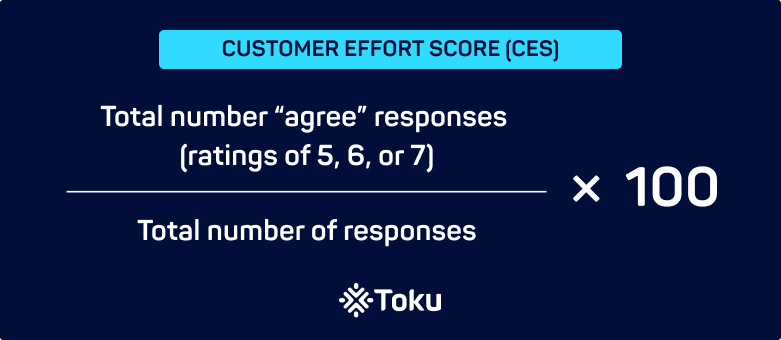Which industries stand most to benefit from implementing an SMS API programmatically in their platforms? Here are four that we think will win big.
Imagine you’re a customer.
Every time you interact with a company, either you breeze through the process or hit a few snags. The easier your experience, the better you feel about the service. That’s what the Customer Effort Score (CES) is all about—it measures how much sweat you break when dealing with a company.
This is important because the easier you make it for customers to interact with your brand – whether it’s to purchase a product or resolve a problem – the more likely they are to return to you in future.
Here’s how to calculate the CES for your business:

Start by adding up the total number of customers who agree their interaction was easy (these are the ones who rated you 5, 6, or 7). Then, divide the sum by the total number of responses. Finally, multiply it by 100.
By the way, the ‘agree’ responses come from the customers who will out your CES surveys, which often ask something along the lines of:
“To what extent do you agree with the following statement: The company made it easy for me to handle my issue.”
When’s the best time to measure CES?
You’ll want to ask customers about their effort right after they’ve dealt with your service team, used your product, or made a purchase. This way, you get relevant insights into their experience when they are fresh in their memory.
What are the benefits of tracking your CES?
1. Spotting pain points
Just like a smooth road makes for a pleasant drive, a smooth customer journey makes for happy customers. Measuring CES helps identify the bumps along the way that are adding effort to your customer experience.
Frequently, a business can pinpoint and fix at a granular level, the points in the customer journey that are adding friction to the customer experience.
2. Cost-effective feedback mechanism
As mentioned earlier, you don’t need fancy tools to find out your CES. A simple and affordable survey can do the trick, and there are plenty of free tools online to help. This makes it easy for businesses of all sizes to keep tabs on their CES.
3. Actionable insights immediately
CES can be a reality check. You might think your process is easy for the customer to navigate, but this metric tells you immediately and in a direct way,
“The customer found this process harder to complete than we expected.”
You can then use this feedback to streamline a process and make customer interactions as hassle-free as possible.
How to improve your CES
- We’ve mentioned above that this metric helps you identify friction points, so this should be a first step for every business.
- Removing ‘dumb contacts’ is critical if you want to reduce the frequency of customers reaching out for support unnecessarily. For a more detailed breakdown of this approach, check out our article on using the Best Service is No Service method.
- Use self-service options like chatbots, knowledge bases, and FAQ pages to help customers answer simple enquiries. This reduces the burden on agents, and gives them more bandwidth to tackle the complex issues faster, which ultimately makes it easier for a customer to access the help they need.
- Empower agents with an omnichannel contact centre as a service (CCaaS) platform that lets them seamlessly attend to all interactions with a customer for a given issue, no matter if the latter switched from one channel to another.
The lower the effort, the higher the satisfaction
Keep an eye on your CES to make sure you’re making things as easy as pie for your customers. Remember, the whole point of building this ‘effortlessness’ is to reinforce customer loyalty and position your company as the go-to for a hassle-free experience.
Additionally, consider tracking CES alongside other key contact centre metrics like Net Promoter Score (NPS) or Customer Satisfaction (CSAT). This combined approach provides richer context, helping you form a more comprehensive understanding of your customer experience.
 V K Sanjeed
V K Sanjeed 




 Rosaline Oh
Rosaline Oh